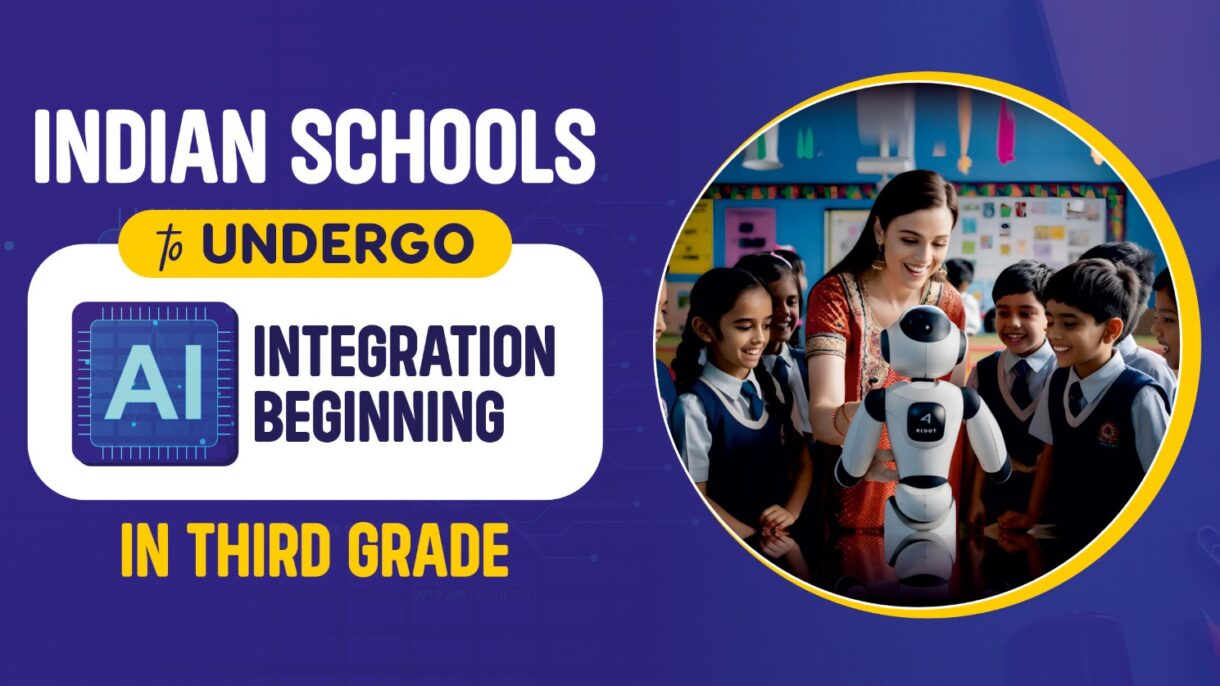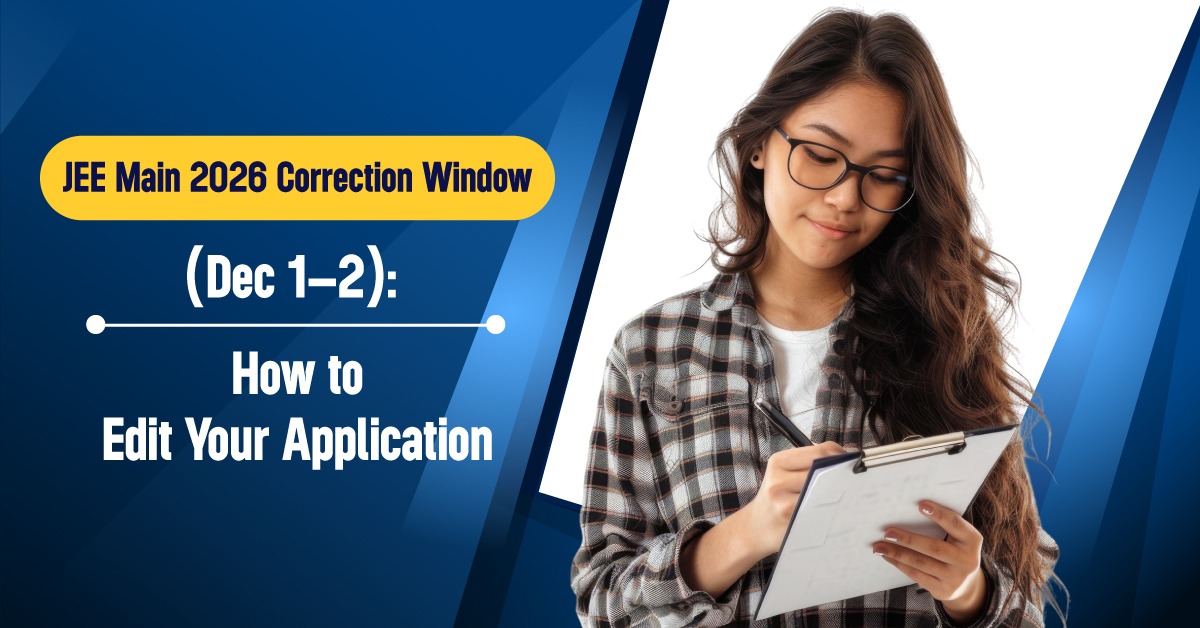
The Indian Education landscape is about to witness a metamorphosis. A complete transformation. Picture a future where a student of class 3 from anywhere in India, be it New Delhi, Chennai, Kashmir or Andaman Nicobar, is not just imbibing the multiplication, division, and addition but also learning – How machines think. And that’s precisely what India’s Education System is gearing up to achieve. Come 2026 – 27, every child studying in Class 3 and onwards will learn Artificial Intelligence and Computational Thinking as part of the regular school curriculum. So, this is not just about adding one more subject – it’s about how we get young, impressionable minds ready for tomorrow.
Is the 3rd Grade the right time to start? Why Start So Early?
This inclusion is sure to raise eyebrows. After all, third graders are still mastering cursive writing, learning to speak and picking up multiplication & division. Why introduce something as complex as AI at this stage?
Deep scientific studies over the years have revealed how children learn. Their minds are incredibly adaptive, constantly changing, inherently interested, and neither averse nor terrified of technology. Introduce the concept of AI early so it would not appear daunting or alien to them. It becomes as natural as learning about numbers, plants, animals, or the solar system – just another lens through which to understand their world.
The Ministry of Education has taken the onus to not just teach children to code or to use an app; the vision runs deeper, to raise a generation that understands technology’s potential, limitations, and ethical dimensions from scratch.
Building Blocks of the New Curriculum
The initiative’s framework is based on National Education Policy 2020 and the National Curriculum Framework for School Education 2023. These are not abstract policy texts; rather, they represent years of thought about what Indian kids genuinely require.
Professor Karthik Raman of IIT Madras leads the council of experts responsible for curriculum development. In the current development, the CBSE collaborates with NCERT, Kendriya Vidyalaya Sangathan, and Navodaya Vidyalaya Samiti to provide material that combines technical knowledge with creativity.
The curriculum will not exist in isolation. Rather, it is integrated into “The World Around Us,” a thematic approach in which the role of AI is demonstrated through everyday events. Learning about traffic networks requires an explanation of how AI optimises routes in those systems. Learning about health encompasses how technology assists doctors. This integration ensures that AI instruction seems relevant, as opposed to being totally theoretical.
More Than Just Technology
What sets India apart, however, is the focus on ethics and social responsibility.
In the recent stakeholder consultation held in late October 2025, Sanjay Kumar, Secretary of the Department of School Education and Literacy, underlined that AI education should not just impart technical skills but moral awareness among students. The goal is to create citizens who critically question: Who benefits from this technology? What consequences might it have that we cannot foresee? How do we use AI for the public good?
The “AI for Public Good” motto permeates the entire endeavour. Students will learn to see technology as a tool for resolving real-world problems — improving agriculture, increasing educational access, and tackling climate challenges — rather than only for commercial purposes.
The curriculum also places an immense emphasis on inclusivity. Indeed, all children everywhere have the right to these fundamental talents. The framework is broad and adaptive, acknowledging the diversity of India’s educational ecosystem.
Teachers: The Real Game-Changers
Rolling out AI education across India’s huge school system isn’t easy. The Ministry knows it all comes down to teachers. If they’re not ready, the whole thing falls apart. That’s why training teachers sits front and center. The NISHTHA program, along with a few national projects, takes on the job of getting educators up to speed. They’re not just getting a pile of documents either—NCERT is putting together videos and handbooks that actually help, especially for teachers who are just learning this stuff themselves. NCERT and CBSE set up a team to keep everything on track—making sure the quality’s there and the rollout doesn’t turn into a mess. They’ve got a tight deadline, too. All the materials and handbooks should be done by December 2025, so teachers have a few months to get comfortable before everything goes live in 2026. And they’re not taking a one-size-fits-all approach. The training fits each grade and sticks to a clear timeline. After all, teaching AI to a third-grader is a whole different ballgame than teaching it to teenagers.
What This Means for Indian Students
Third graders today will start college in 2030. By then, they’ll have grown up learning about the basics of AI, how to think like a computer scientist, and why tech ethics matter. They won’t just use technology—they’ll build it, question it, and make choices with real thought behind them. These kids will know how algorithms shape their social media, how AI affects who gets hired, and how machine learning can fix problems but also stir up new ones. But here’s the real kicker: they’ll be able to roll with whatever tech throws at them. We honestly can’t predict what apps or gadgets will be a big deal in fifteen years. Still, if we give students solid ways to think, they’ll be ready for whatever comes next.
The Road Ahead
India isn’t the first country to bring coding or computational thinking into schools, but the way it’s doing it stands out. Kids are starting earlier. Ethics isn’t an afterthought — it’s right at the centre. And AI isn’t treated as some niche topic; it’s a core skill everyone’s expected to pick up. Honestly, this is a bold move for India’s education system. There’s no pretending the road ahead is easy. Training so many teachers, creating the right kind of content for different ages, and making sure kids in rural areas get the same shot as those in cities—these are big challenges. Still, the government isn’t going it alone. Experts, institutions, and local authorities are all weighing in, which shows they’re aiming for a smart, well-thought-out rollout. Prachi Pandey, (Joint Secretary Information & Technology), who’s leading the charge on innovation and tech, put it plainly: the timeline is set, and things are moving fast, but they’re not rushing blindly. There’s real urgency, but also a plan.
Dawn of a New Era – VMC Launches VEEVA (The AI learning companion) for its students
VEEVA represents a significant leap forward in VMC’s commitment to integrating technology with education. The platform leverages Artificial Intelligence to help students learn smarter, solve faster, ask doubts anytime, get alternative methods to solve questions, and understand better. Through VEEVA, VMC aims to create a personalised and interactive learning environment that enhances conceptual understanding and develops continuous learning.
A Classroom Revolution
Enter, if you will, into a classroom in the year 2027. Third graders are not merely memorising facts but are instead designing simple programs to sort objects, debating whether AI should make certain decisions, exploring how computers recognise faces, and proposing solutions to local problems using technology.
These are not passive learners being lectured on some abstract concepts; rather, these are active participants in understanding and shaping their technological world.
That’s what this initiative promises: AI-literate students, but also young people with the capability of critical thinking, ethical awareness, and creative problem-solving that enables them to navigate—and, where possible, improve—an increasingly digital world.
India’s classrooms will soon be something much more than places of traditional learning. They are the launching pads for a generation that would not be afraid of technology but understands it, questions it, and eventually harnesses it for true social good.
The countdown to 2026 has begun. And for millions of young Indians, education is about to get a whole lot more interesting.
Word of Advice
AI is a groundbreaking technology that has begun to reshape every vista and field. A transformative innovation that will change the way we think, behave, and work, paving the path for a bright future. However, this does not mean that pupils should not use their brains. Overreliance on AI can undermine students’ critical thinking. You’ll forget how to think, since this technology has made it so simple. Use your own intelligence, analytical aptitude, and reasoning skills to widen your thinking abilities. Then integrate it with AI. Only by learning to operate flawlessly with AI will we be able to achieve our full brain capability.







0 Comments